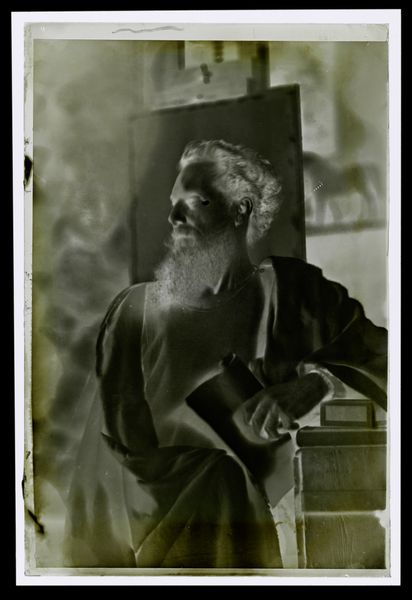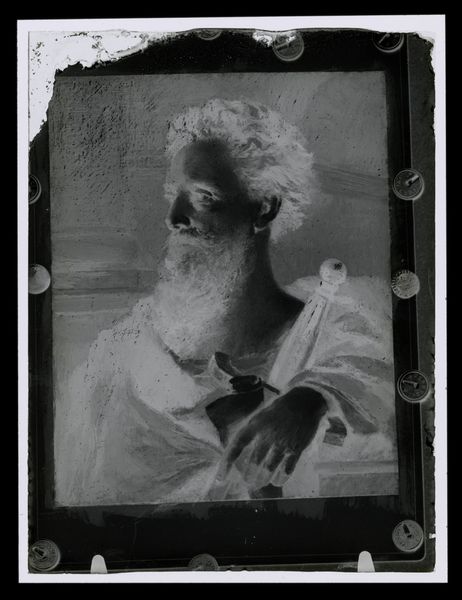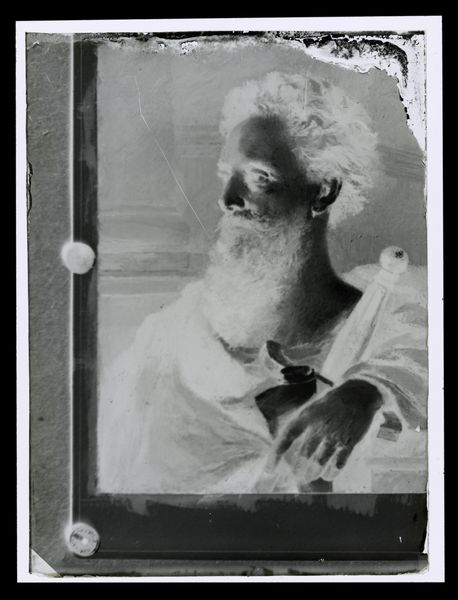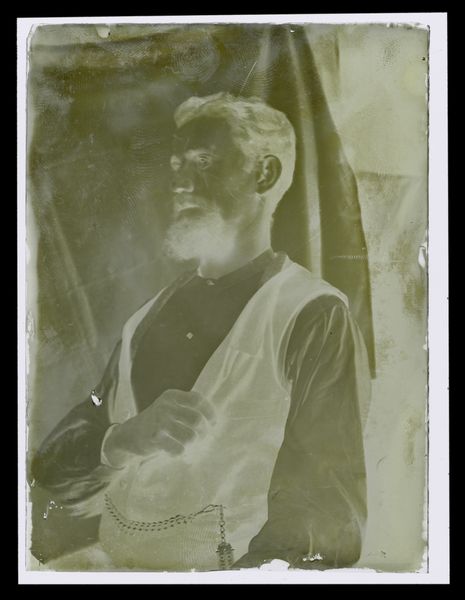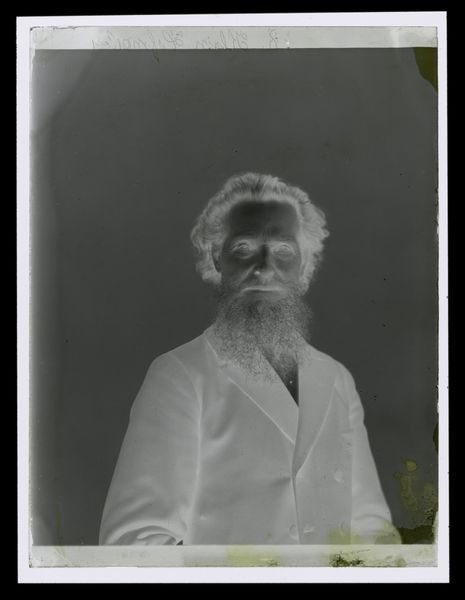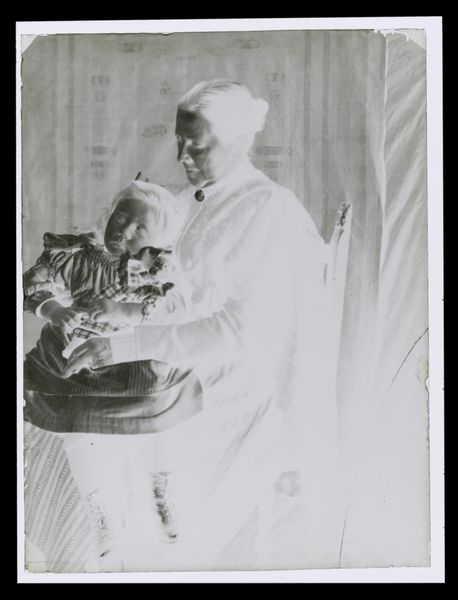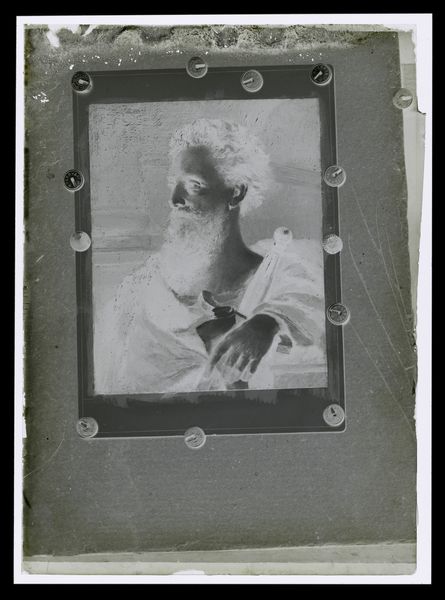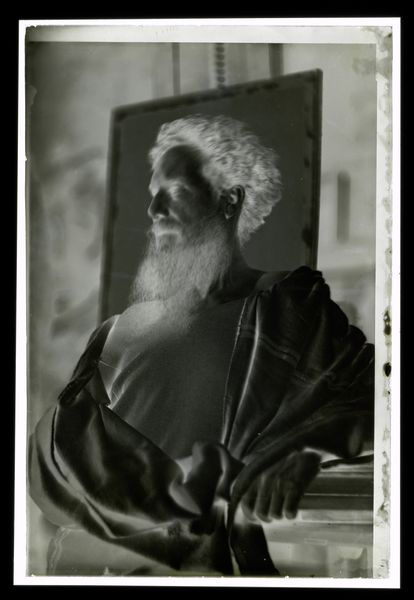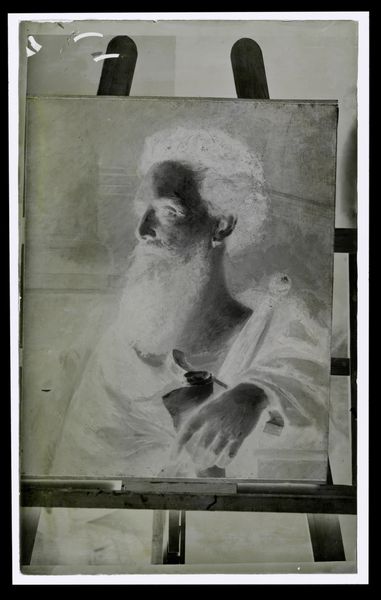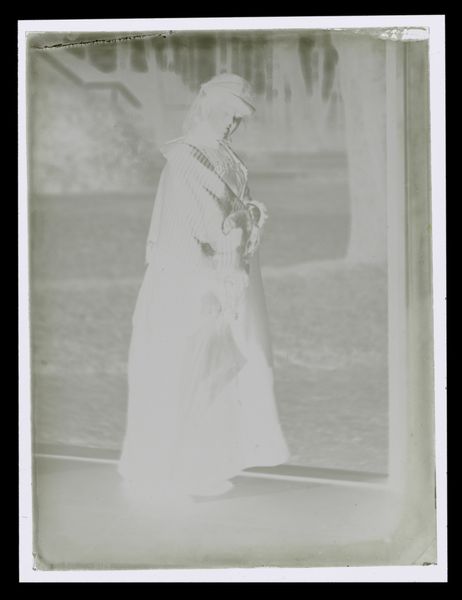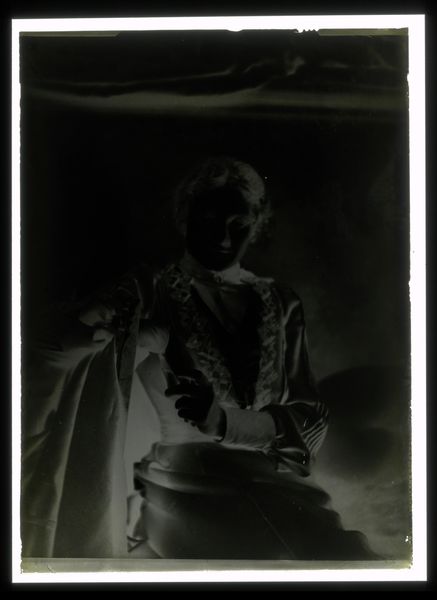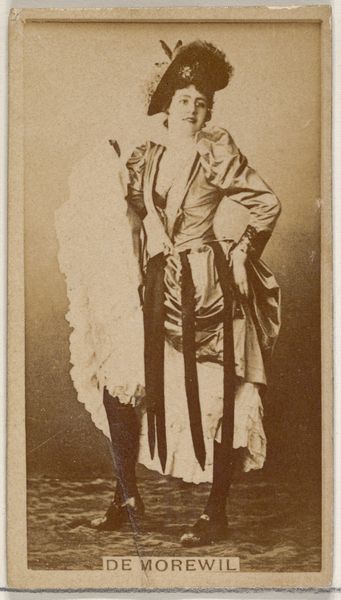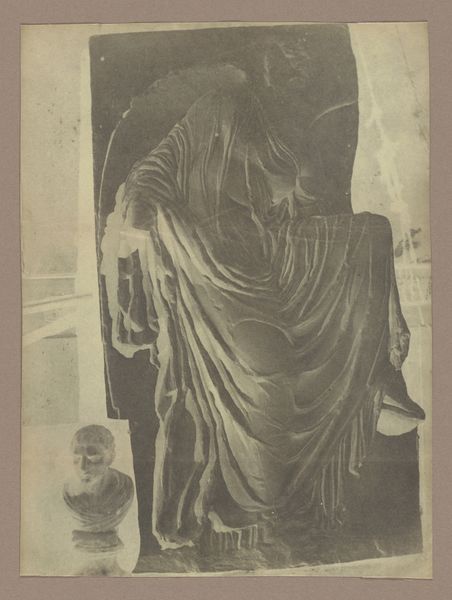
photography, gelatin-silver-print
#
portrait
#
photography
#
gelatin-silver-print
#
history-painting
#
realism
Dimensions: height 180 mm, width 130 mm
Copyright: Rijks Museum: Open Domain
Curator: This is an intriguing gelatin silver print dating roughly between 1865 and 1900. The piece is titled "Laurens Lodewijk Kleijn as the apostle Paul.” What's your first impression? Editor: Spectral. Almost ghostly, isn't it? The stark reversal of tones creates an ethereal effect, as if we're gazing upon a biblical apparition rather than a mere mortal. There's a definite air of melancholy, too. Curator: Indeed. I'm drawn to the way the photographer—whose name, unfortunately, remains unknown to us—utilizes photographic portraiture to evoke historical painting. Think about the artistic and cultural milieu where the quest for realism was really blooming. How could this serve the socio-political purposes of the period? Editor: That’s an important point. By invoking Saint Paul, the photograph potentially aligns Kleijn, the subject, with notions of religious authority and perhaps even intellectual or moral leadership. But I'm particularly curious about the scroll or cylinder in his hand. It looks very much like the scripture normally seen on portraits of St. Paul. I wonder what purpose does its insertion as a trope here serve. Is it strictly reverential? Or something more performative about the subject? Curator: Absolutely. It speaks to the power of symbols—the scroll representing divine knowledge, Paul's letters—and how those symbols transcend their original context to convey a specific meaning. The use of Kleijn as the model emphasizes a visual continuity of faith, translating across eras. Editor: Which itself reflects the institution within which the photograph probably would circulate at the time. It also underlines a particular narrative the image is seeking to create around figures of power within the community: look how, through emulation, our leader echoes saints and apostles. How fascinating to see photography used to craft that kind of visual association. Curator: It prompts us to ask what these symbols represented not only then, but what they signify today. The image embodies our enduring fascination with archetypes, their repeated usage becoming ingrained cultural memory. Editor: It highlights the enduring political utility of cultural symbols too, their persistent power to evoke authority, inspiration, and collective identity throughout history. Curator: Very well. This image definitely showcases how intertwined art is with politics and collective psyche!
Comments
No comments
Be the first to comment and join the conversation on the ultimate creative platform.
